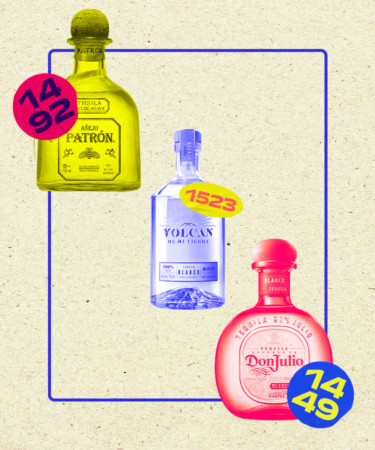Between tequila’s newfound celebrity intrigue, increasing popularity among American consumers, and production volume growing over 180 percent since 2002, the category’s ascension in the United States is palpable. And while more and more tequila brands flooding the U.S. market means our agave cravings are sure to be satisfied, this also means that finding quality tequila requires more discernment than ever. Luckily, there’s one surefire way to locate the right bottle among an endless sea of agave spirits.
Enter: NOMs, or Norma Oficial Mexicana.
NOMs are the four-digit numbers located on the back of every bottle of tequila. These numbers represent the distillery at which the liquid inside was produced. As it is required that every tequila brand indicate its NOM on the back of its bottles, these numbers are a helpful indication of determining the legitimacy and caliber of tequilas. Searching a NOM online on sites such as Tequila Matchmaker will instantly reveal where the tequila was made — and which other tequila brands were also made at that distillery.
According to Adriana Baca, global education ambassador of Volcán de Mi Tierra tequila, there are more than 1,400 registered brands of tequila on the market — yet, there are only about 140 licensed tequila distilleries in Mexico. This means that some NOMs are associated with tens, or even hundreds, of tequila brands. Beverage pros are often wary of products made at such mega-distilleries, as these giant operations often use flavor additives and diffusers in their tequilas to create differences between the brands they produce — and are not required to disclose this information on their labels. Plus, NOMs churning out such volumes of tequila are unlikely to pay as much attention to detail as a family owned or small craft distillery that’s only producing a single brand.
“Only a few brands have their own dedicated distillery, which can be a token of quality,” Baca says. Volcán’s NOM, 1523, represents only one brand, Volcán, and this is increasingly a rarity within the growing tequila market. In fact, according to a 2015 report by Taste Tequila (the publication behind Tequila Matchmaker), only around 2 percent of tequila brands are made at dedicated facilities. This means fewer than 30 brands on the market, including Patron (1492), Suerte (1530), Fortaleza (1493), and now, Volcán (1523), are the sole tequilas associated with their NOMs.
Of course, just because a NOM is associated with fewer brands doesn’t necessarily mean the facility is producing better liquid than others. Tequila’s quality is more accurately determined by its ingredients, environmental practices, and the fermentation and distillation techniques used to make it. That said, facilities producing fewer brands are consistently rated higher among consumers, with the 10 highest-rated distilleries producing between one and 15 brands, according to Taste Tequila.
While tequilas that share a NOM won’t necessarily taste exactly same — they can use agaves grown at different locations — they’re made at the same location using the same equipment, meaning they will have some similarities in flavor profiles. Two tequila brands with the same NOM could, in fact, be the same exact liquid — though suspicious tequila pros admit they have no way to prove it.
Consumers may be surprised to learn, for example, that Espolon shares a NOM (1440) with 1990s-era celebrity tequila Cabo Wabo (originally founded by Sammy Hagar); or that Herradura and El Jimador (1119) are distilled at the same facility (Campari Mexico). Fans of Jose Cuervo who search its NOM (1122) will find that there are 17 other brands associated with that label — a possible sign to avoid tequila with that NOM if you’re not a fan of the brand, or to look out for it if you are.
Although NOMs can be clues for bottles not to buy, they can also serve as a beacon for discovery. In the end, these four digits give us the chance to learn a little bit more about where our tequila comes from, and to find what’s best for our palates.
